
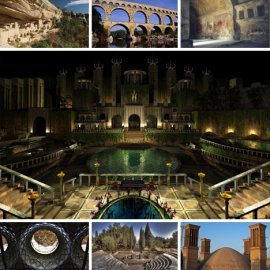 We've advanced significantly since humans first used biomass fuels for his or her fires over 800Thousand years back. Eco-friendly design, sustainable innovation, renewable power – they are all lately-created buzz-phrases for concepts that in some instances go as far back hundreds of 1000's of years. The traditional Chinese used concentrated photo voltaic energy for warmth energy and fire, Indigenous Peoples used hot springs as renewable geothermal power sources to cook and healing, and a few speculate the Egyptians used wind energy to assist build their pyramids. From A holiday in greece and Rome to Persia and The United States, listed here are seven incredibly innovative purposes of geothermal power, water, wind and photo voltaic energy from round the ancient world.
We've advanced significantly since humans first used biomass fuels for his or her fires over 800Thousand years back. Eco-friendly design, sustainable innovation, renewable power – they are all lately-created buzz-phrases for concepts that in some instances go as far back hundreds of 1000's of years. The traditional Chinese used concentrated photo voltaic energy for warmth energy and fire, Indigenous Peoples used hot springs as renewable geothermal power sources to cook and healing, and a few speculate the Egyptians used wind energy to assist build their pyramids. From A holiday in greece and Rome to Persia and The United States, listed here are seven incredibly innovative purposes of geothermal power, water, wind and photo voltaic energy from round the ancient world.
Ancient Wind Energy Designs
1) Wind for Energy and Water: Ancient Persian Windmills
(Images via:, , and )
The first known windmill design goes back 3000 many years to ancient Persia where these were accustomed to grind grain and pump water. Reeds were bundled up together to produce vertical paddles that spun around a main axis. Carefully placed exterior walls made certain that wind would mainly drive the potentially bidirectional system within the preferred direction.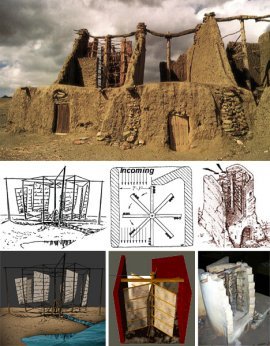 Obviously, using wind energy in sailing predates the inventions of windmills but fundamental essentials first known utilization of wind to automate mechanical/manual everyday tasks.
Obviously, using wind energy in sailing predates the inventions of windmills but fundamental essentials first known utilization of wind to automate mechanical/manual everyday tasks.
2) Wind for Air conditioning: Ancient Persian Wind Towers
(Images via:, and )
Persia can also be the initial is know for probably the most complex passive ventilation and cooling systems which has ever been around – 2Thousand-year-old engineering that rival modern hi-tech counterparts using the easy and elegant effectiveness of the design. Using a mix of air pressure differentials, structural orientation and flowing water these windcatcher structures help regulate temps within the toughest of desert conditions with awesome nights and burning hot days.
Ancient Water Energy Designs
3) Water Energy: Ancient Roman Gravity Aqueducts
 The Romans are very well recognized for their many colossal and ingenious works of architecture and engineering but possibly first and foremost for his or her gravity-driven water-disbursing and waste-evacuating aqueducts – most of which continue to be being used today. Greater than a marvel of ancient plumbing, these aqueducts will also be an earlier illustration of renewable water energy for mines, forges, mills and baths. Water was utilized in hydraulic mining to prospect for, crush and clean ore and sure to function hammers to crush ore and water wheels.
The Romans are very well recognized for their many colossal and ingenious works of architecture and engineering but possibly first and foremost for his or her gravity-driven water-disbursing and waste-evacuating aqueducts – most of which continue to be being used today. Greater than a marvel of ancient plumbing, these aqueducts will also be an earlier illustration of renewable water energy for mines, forges, mills and baths. Water was utilized in hydraulic mining to prospect for, crush and clean ore and sure to function hammers to crush ore and water wheels.
4) Water Reuse: Ancient Jerusalem Grey-Water Plumbing
(Images via: and )
Situated at high elevation and from plentiful causes of surface water, the traditional town of Jerusalem has depended on subterranean rivers along with other difficult-to-access undercover causes of water for pretty much 15Thousand many continues to have well tunnels that go as far back towards the twelfth Century BC. Because the city increased and developed so did its water use and reuse systems. Sink water was conserved in basins and accustomed to flush waste similar to modern sewers but additionally saved to water gardens while particles were strained to supply fertilizer for surrounding fields.
Ancient Geothermal power Energy Design
5) Renewable Geothermal power Warmth Energy: Ancient Roman Thermal Baths
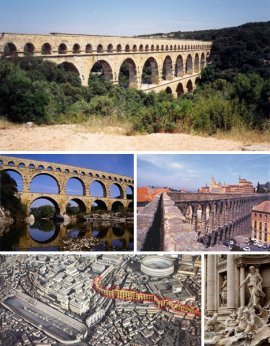
Ancient Romans used geothermal power energy not directly with the water it heated, specifically in metropolitan areas such as the infamous volcano-hidden Pompeii (proven above) for his or her baths and also to warmth houses. These thermal energy projects were almost always restricted to location and determined by closeness to places such as the area surrounding Mount Vesuvius where hot magma was nearer to the Earth’s surface. Romans also produced ice using thermal differentials – carving starts, investing in water and covering them throughout your day so that they would freeze during the night.
Ancient Photo voltaic Energy Designs
6) Passive Photo voltaic Orientation for Heating: Ancient Greek Language Metropolitan areas
Because the ancient Greeks went into fuel shortages, similar to the contemporary civilized world, they began to consider more on how to design structures to maximise warmth gain and retention throughout winter several weeks. They started orienting structures and full city grids so that houses had extra southern contact with capture solar sun rays from low on the horizon within the very coldest parts of the season. Romans eventually required things one step further with the addition of glass for their home windows to be able to retain a lot of warmth collected from sunlight.
7) Passive Photo voltaic Shade to cool down the: Indian High cliff Houses
The so-known as High cliff Structure in Mesa Verde Park, Colorado may be the biggest high cliff dwelling available in The United States. Those who once resided there had lives that revolved round the sun in additional ways than a single. The passive photo voltaic (along with other weather) protection supplied by the monstrous overgrown high cliff over the settlement is simply one example. Additionally they build structures in key positions to become photo voltaic indications at particular occasions of the season, including solstices, for practical and spiritual reasons.
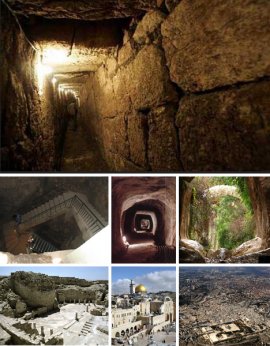
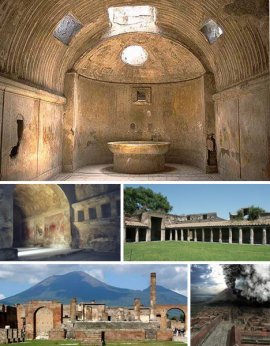
RELATED VIDEO




 In passive solar building design, windows, walls, and floors are made to collect, store, and distribute solar energy in the form of heat in the winter and reject solar heat in the summer. This is called passive solar design or climatic design because, unlike active...
In passive solar building design, windows, walls, and floors are made to collect, store, and distribute solar energy in the form of heat in the winter and reject solar heat in the summer. This is called passive solar design or climatic design because, unlike active...







